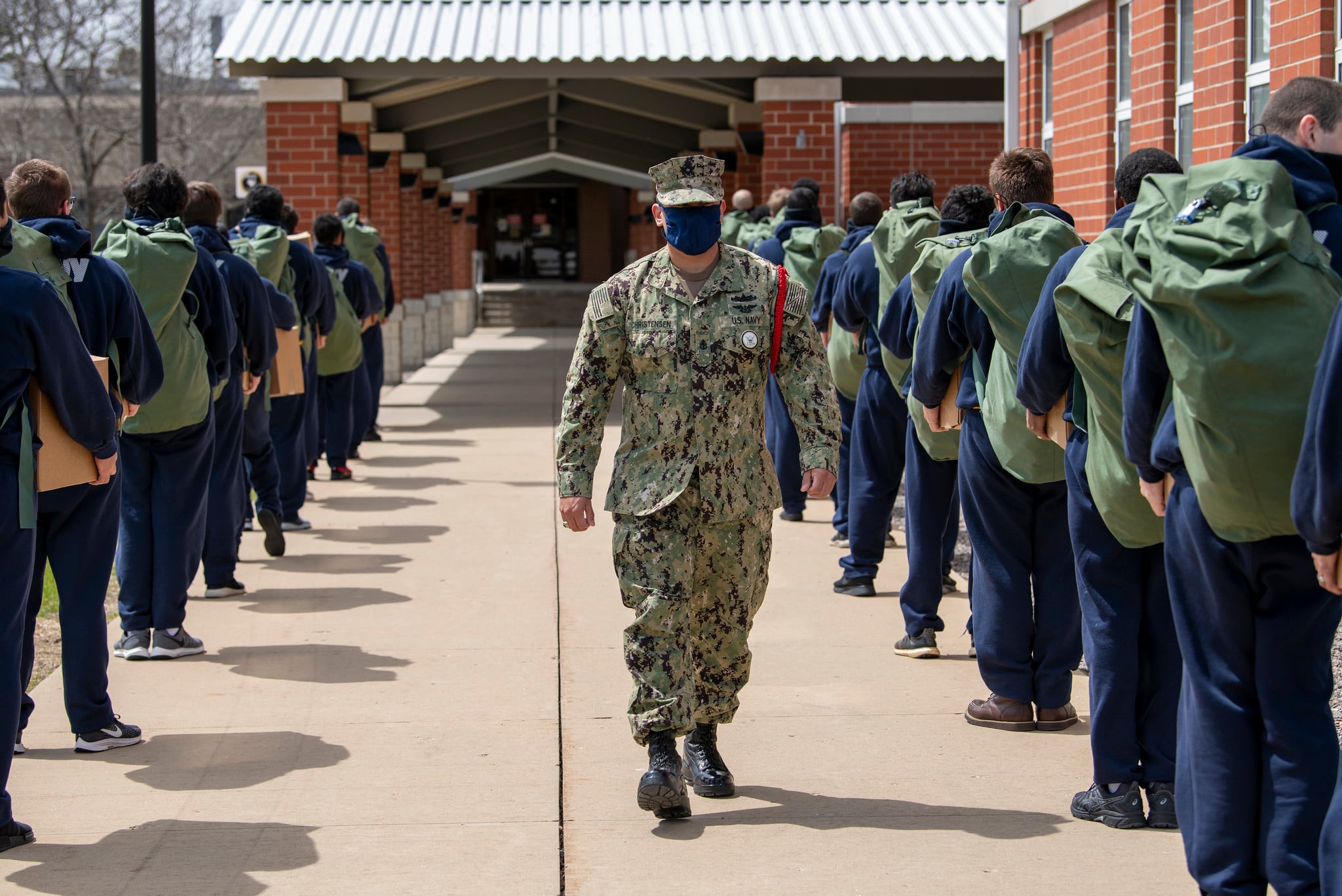The largest class of recruits in more than 15 years just graduated from the Navy’s Recruit Training Command, and the service has surpassed its enlisted accession goal for fiscal 2020, according to Chief of Naval Personnel Vice Adm. John Nowell Jr.
“Since COVID became a part of our lives this past March, we’ve managed to hit our recruiting goals for FY20,” Nowell told reporters Tuesday. “We met those goals, in fact, we exceeded them.”
The Navy’s initial accession goal for the year was 40,800 personnel, but ultimately that number was adjusted to 39,600. Cmdr. Lara Bollinger, a spokesperson for Navy Recruiting Command, told Navy Times the service accessed a total of 39,678 new sailors in FY20.
Additionally, more than half of those recruits graduated from Recruit Training Command at Naval Station Great Lakes in Illinois after the COVID-19 pandemic started, according to Nowell.
“We’ve graduated more than 20,000 recruits amidst COVID from our Recruit Training Command,” Nowell said. “In fact, last week, we graduated a class of 1,326 recruits from RTC Great Lakes … that’s our largest class … since 2004.”
“Just think about that: amidst COVID, the largest graduating class from RTC since 2004,” Nowell said.
Nowell said in May he was “cautiously optimistic” the Navy would reach its recruiting goals by the end of the fiscal year, but noted it was “conditions-based.”
RELATED

That’s because the COVID-19 pandemic has forced all the services to adapt how it recruits new service members. For example, the Navy was forced to take a three-week spring break from shipping new recruits to the training center after a recruit there tested positive for COVID-19.
When things started back up again in April, the Navy started requesting recruits voluntarily undergo a 14-day restriction of movement, or ROM, before departing for Great Lakes. Furthermore, the Navy then required a mandatory 14-day ROM before training started.
According to Nowell, the Navy was using approximately 11 different hotels near Great Lakes for recruits to conduct their mandatory ROM. But since August, recruits have instead headed to an Army Reserve base to complete their ROM before heading to Great Lakes.
"We have now transitioned that fully to an Army Reserve base in Wisconsin called Fort McCoy, Nowell said.
Moving from the hotels to Fort McCoy for the ROM period has saved the Navy roughly $2.8 million per month, he added.
The Navy also had to adjust the class size of recruits to safeguard against the spread of the virus, dropping to just 500 recruits per class. The service resumed classes of more than 1,200 recruits starting in July, according to Lt. Cmdr. Frederick Martin, a spokesperson for Naval Service Training Command.
The Navy largely credits its recruiting accomplishments to being ahead of the game in terms of recruiting virtually. For example, the Navy revamped its 26 Navy recruiting districts in 2016 and modified them as Navy talent acquisition groups, which ended up launching the e-talent divisions the Navy has capitalized on this year.
“A large part of the Navy’s success was because we had already started down the pathway of trying to get into the online realm,” Cmdr. Thomas McKeon II, operations officer for Navy Recruiting Command, said in the Navy’s October Sailor-to-Sailor newsletter. “A fundamental part of the transformation we’ve been doing has been creating whole e-talent divisions for that purpose.”
According to Secretary of Defense Mark Esper, all services are in good shape regarding their FY20 recruiting targets. Although the Navy was the only branch to exceed its enlisted recruiting goals, within the officer pipeline, the service was just shy 200 officers for FY20, Navy Times previously reported.
Meanwhile, the Marine Corps hit its goals for enlisted and officer personnel, and the Army met its end-strength goal of 485,000 soldiers for FY20. However, the Army only accessed a total of 62,150 new soldiers this year — down from the 68,000 goal the Army established last year.
“I’m pleased to report right now that the numbers look good,” Esper said Oct. 15 at The Heritage Foundation. “The services have met their marks.”
To date, the Navy’s active duty, enlisted accession goal for FY21 is 38,000 personnel, according to Bollinger.




